Dogs of North America ~ Part 2 ~
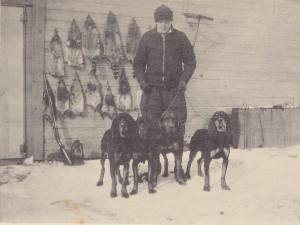
Coonhounds
by Amy Fernandez
Although the modern media does its best to distort the fact, purebred dogs stem from a long tradition of the form follows function concept. And that concept had ironclad credibility by 1492 when legions of them began landing on these shores to reunite members of a species that had gone separate ways at least 15,000 years earlier. Like every other aspect of this invasion, European breeds came out on top. However, in many cases, it wasn’t exactly a conquest.
In contrast to the compartmentalized roles that polished the talents of European breeds, America’s pre-Columbian dog scene was one big, nonstop rave party. Many breeds were stabilized and perfected. But the single essential requirement for every one of them was versatility. American dogs were incredibly tough and adaptable. These usurpers were unquestionably efficient at their particular jobs, but they fell short in that respect. Quarry like raccoon, possum, coyote, and bobcat demanded a brand new skill set like climbing trees, navigating swamps, and as Oliver Hartley observed in his 1909 book Hunting Dogs, “surprising is the meagerness of information available to the average night hunter though night hunting is an institution as old as the settlement of Jamestown”. Over here, practical reality, not sport, forged hunting protocols. That was just the beginning.
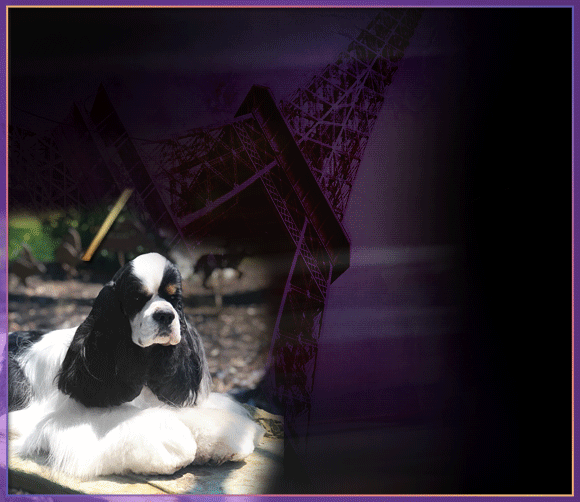
American challenges shook up the purebred paradigm in unimaginable ways. This metamorphosis had brewed for about 500 years when Joseph Graham provided his 1904 progress report in The Sporting Dog, “In our actual sports we use setters and pointers, foxhounds and beagles, greyhounds, and two breeds of water retrievers. These regular breeds are all British …reduced to the simplest terms, the change wrought over here comes to this: the dry climate of extreme temperatures, the nature of the grounds and game, and the methods of hunting the fox and shooting game birds cause a lighter, faster, more enduring animal, perhaps not more sensitive of nose, but quicker in the reflexes of judgment and action which are the sequences of scent. An American will pardon every defect but one, the inability to stand the pace.”
That was a fair assessment. American priorities were based on getting the job done, even if that meant violating every revered aspect of type that defined these beautifully crafted breeds. Writing seven decades later David Michael Duffey’s Hunting Hounds recapped that facet of American Hound development. He wrote, “Because the U.S. furnishes a wide variety of game, cover, and climate, many different strains have been developed.” In reality, it was comparable to a chop shop.
Possibly the most profane violation of the purebred status quo was America’s approach to Sighthound breeding. Borzoi, Deerhound, Wolfhound, all these ancient, venerated breeds represented countless generations of carefully nurtured, fiercely protected bloodlines. Americans proceeded to lump them together into something eventually dubbed the Long dog, which existed for two centuries when Duffey officially acknowledged it in his book. He wrote, “In the middle of the U.S. (Kansas, Oklahoma, Texas, Nebraska, Iowa, and Missouri) sportsmen refer to these running hounds as ‘long dogs’….Basically of greyhound stock, representatives of virtually all recognized coursing breeds for want of a better term, just as hounds we use to trail game were assembled in America and could be lumped together under the general heading of American trail hounds, so might hunters on the plains states put together a breed we can call American long dogs, plains hounds, or Great Plains harriers, take your pick.”
Then again, some may argue that America’s approach to Foxhound breeding qualified as a worse criminal offense. By the seventeenth century, Foxhounds emerged victorious in Britain’s reinvention of sport hunting. It was the first hunting dog imported extensively and, as Graham notes, immediately put to work in situations that no English hunt kennel would have imagined. “Some carefully selected costly packs of foxhounds are used chiefly for deer, while the wildcat, worthy game and a hated predator, becomes the main object in other localities,” he wrote.
Like most imports, Foxhounds were revised to suit the job at hand. “The American sportsman has always been interested in improving his hunting dogs by crossbreeding strains and breeds,” he said. Duffey rather understates the situation. The primary result was the American Foxhound. It became the fatal gateway to countless specialized regional coonhounds, deerhounds, cathounds, bearhounds, boarhounds, and coyote hounds distilled from that fine English stock.
In his Modern Dog Encyclopedia Henry Davis cited some prominent hound strains developed by 1949, such as Walkers, Triggs, July, Birdsong, Black and Tan Coonhound, Virginia, Redbone, Bluetick, Treeing Walker, and Plott. Remarking on AKC’s ongoing reluctance to recognize them, Davis emphasized that fanciers remained unconcerned about that ostensible snub. They continued to refine true breeding strains which they registered with UKC or other private registries. Of course, AKC has since reversed that stance, and these breeds have flooded the Hound Group.
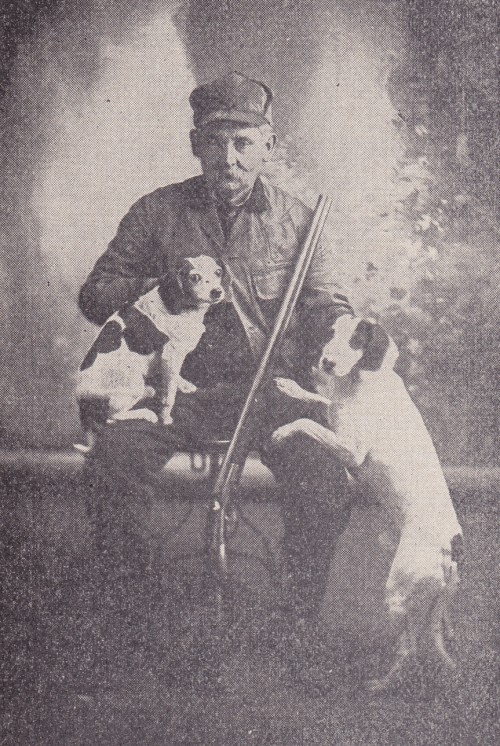
Beagles
The Beagle was a prominent victim of Britain’s Foxhound supremacy. But America is a big country, and its fondness for Foxhounds never infringed on Beagle popularity. Graham stated the case rather bluntly, “If the white man who first saw a jackrabbit felt the need of a greyhound, the first one to see a cottontail surely resolved to send to England for beagles… From colonial times these small hounds were introduced along the Atlantic coast.”
That’s true, broadly speaking. Americans quickly recognized the Beagle as an indispensable ingredient to enhance countless canine recipes. Graham wrote, “Generally they became mixed with foxhounds and the resulting stock resembling the harrier spread all over the settled parts of the country.” Summing up its American history, Graham admits, “all in all, the beagle, pure and mixed, has had a career in hunting experiences of the United States quite as important as the foxhound and not much inferior to the shooting dog.”
Americans can’t be blamed entirely for the Beagle’s erratic type. British Beagles were definitely fading off the screen when imports began arriving in quantity. Inevitably, those remnants were a varied assortment. The most significant effort was, “The importation by General Rowett of Carlinsville, Ill. which has been known since as the Rowett strain.” Putting the Rowetts importance into perspective Hartley explains, “when it comes to beauty and hunting qualities combined they are among the best in the country…A Rowett Beagle meant a dog of the very best type…. eagerly sought by all Beagle breeders.”
Watson’s concurrent Beagle rundown enlarges this picture saying, “In addition to the Rowetts in Illinois there was a strain in Virginia developed from another type of import,” which he describes as a rangier houndy type, frequently pied or mottled, varying in size from under 10 to over 16 inches The most notable line to emerge from these imports was Blue Cap. Maybe they were a bit off kilter in respect to proper type, but according to Hartley they had their charms. “The Blue Cap strain imported by Captain William Ausheton in the seventies [1870s] have a stronger love for the scent of rabbit than anything else. By crossing strains it is possible to get Beagles with a fierce hunting disposition that will hunt and fight anything that wears fur, keen scent, wide chest, heavy bone, round fat feet that can put up a day’s work every day.”
Good, bad or indifferent, these dogs became the basis of countless Beagle breeding programs as Watson confirms saying, “In the early nineties [1890s] Beagles were bred in great numbers but they were not the kind we are now accustomed to seeing. Along with those Harrier impersonators, possibly the most controversial derivative type to emerge was the Bench Legged Beagle, which many considered to have more than a passing acquaintance with Dachshund. Nonetheless, Bench Legged Beagles were ideal for rabbit hunting throughout the densely wooded southeast and they were insanely popular.
The downside of this utilitarian focus became starkly apparent when Beagles (pied, bench legged, and the rest) entered the ranks of American show dogs. However, it ensured the continuation of a breed that was, quite possibly, nearing the end of the line in Britain.

This proletariat approach not only reflected America’s incredible variety of climate, terrain, and game, every consequent effort to customize established breeds benefited from countless viewpoints and contributions. Europe and Britain were not only smaller and less geographically diverse, but most purebred stock was tightly controlled by a small clique of landowning aristocrats. And as Graham explained, nothing surpassed the elitism surrounding British Gundog development. He wrote, “In England the landowner has most of the sporting dogs…To the Englishman, sport goes with the land and breeding with the sport.” That, of course, depended on their continued interest. And by the 19th century a sizable contingent of them were systematically phased out by the narrowing focus of British sport hunting. Among others, the Curly, Flatcoat, Sussex, and Clumber found themselves stranded on that leaky life raft of dwindling popularity.
The Irish Water Spaniel became the sole survivor among Britain’s multitude of specialized breeds developed to hunt waterfowl in bogs and marshes. Warning that, “fresh blood is badly wanted,” The Kennel highlighted its growing plight in a January 1912 feature, Gundogs for Work and Show. “It is now sixty years since the McCarthy breed of Irish Water Spaniel emerged from obscurity of a private strain, and took his place as a recognized gundog. He came with a reputation second to none as a helpful companion , hard as nails, plucky, good tempered, no day was too long, no water too cold for this devil may care product of Erin’s Fair Isle. Possessed of a good nose and a tender mouth, it is no surprise that with a very limited supply of the genuine article large prices were realized for the best specimens.”
The first retriever brought to America; Davis tells us “to provide a rugged waterdog that could work in heavy cover and icy water day after day. Ducks and geese formed a large part of the nation’s food supply and market shooters could not afford to waste powder and shot. Every bird brought in was a quarter saved.” He added that it’s fast on land and water, marks well, handles easily, can think for himself, and has a fine nose, but there’s always room for improvement. “Although American gunners originally imported these dogs because the conditions and cover in Irish rough shoots was similar to those found in this country, they soon began to breed larger, heavier, longer legged dogs even better suited to its working conditions.” Needless to say, that role also expanded. Davis continued, “They retrieve all kinds of upland game as well as waterfowl and are used in many parts of the country for springing pheasants and trailing rabbits and fox.”
To put its popularity into perspective, the 1878 precursor to AKC’s foundation studbook, The National American Kennel Club, recorded 23 IWS along with two Chessies – the only other Retriever registered at that point. Citing its once lofty American status, Watson noted its precipitous decline by 1905. He wrote, “It was nothing unusual for 60 to 80 or more Irish Water Spaniels to be registered in a year, 83 were registered in 1890 while at the present time the annual records with the AKC may reach half a dozen, but does not always do so.” Faltering interest reflected in both Kennel Club and AKC registrations wasn’t the whole story, as Davis notes, “unfortunately, registration is the only real record of a breed’s popularity but there are many good Irish Water Spaniels of pure breeding scattered all over this country and never registered because their owners are typical, old time gunners who appreciate the dog for an honest day’s work and cannot be bothered to fill out a form.”
Likewise, the Curly found new fans here. It was fast and efficient, and virtually impervious to America’s rough, icy water. Extolling its fine qualities, the May 1934 Gazette remarked on its “great staying power, remarkable hardiness, and wonderfully thick coat which enables him to face the most punishing cover…he is temperamentally easier to train than other gun dog varieties and will practically live in water. His nose is good, he is tender in mouth, and he is a good traveler.” That said, the article states its purpose, “The Curly Retriever was one of the most popular gun dogs of the last century. Who can account for the rise and fall in the popularity of breeds?…It is indeed sad that grand breeds like the Curly Retriever should have declined and almost sunk into oblivion…thankfully many devotees have carefully preserved their strains.” Of course, the Gazette wasn’t about to acknowledge that documented individuals represented a small fraction of those strains by then.
Davis wrote, “Popular belief is that the Curly descended from the extinct Old English Water Spaniel and the Irish Water Spaniel” and an American progenitor. Davis explains that the small St. John’s dog that arrived in Britain about 1835 with cod fishing boats returning from Newfoundland was also used to create the Labrador. In a truly cruel twist of fate, the American revival of both the Curly and the Irish Water Spaniel was cut short by the same upstart Retriever that had steamrolled them back home in Britain.
Officially, Labradors were the headliners. But off the grid, many fanciers remained devoted to lesser-known Retrievers. Their singular abilities were also melded into several American creations like the American Water Spaniel, Boykin Spaniel, Nova Scotia Duck Tolling Retriever, and the Chesapeake, which according to Graham was produced by breaking every rule of breed development. He wrote, “Its strong power of scent, hardiness, and remarkable endurance come from the hound, while the love of water, swimming power and extraordinary ability to endure cold, wonderful intelligence, and general good temper are due to the Newfoundland. There has doubtless been added some water spaniel, which help its remarkable retrieving qualities.”
Nothing exemplified America’s dog breeding improv better than our approach to Setters. In Europe, the term first surfaced in the early 1500s. In a generic sense, Setters rose steadily through the Gundog ranks from the moment that firearms came on the scene. However, nothing lasts forever and 400 years later they were on the bad side of that popularity spike. Today, the Kennel Club classifies the English Setter as a vulnerable breed, and as Croxton Smith noted in Dogs Since 1900 it might it have disappeared if not for field trials. He wrote, “Although Pointers and Setters have largely gone out of fashion except on a few moors that are more suitable for doggoing than for driving. I am glad to say that the admirers of these beautiful dogs have kept trials going for them.”
That reversal of fortune coincided with America’s unprecedented sport hunting revival after the Civil War. Setter breeding predated the Revolutionary War, and naturally conformed to traditional American practicality before shows and field trials rearranged those priorities in the 1870s. As Graham admits “straight bred” Setters were the exception, not the rule. “Ducking men are not sticklers for pedigree, and many of them prefer a crossbred dog to either its water spaniel mother or setter sire. This setter spaniel cross is enough waterdog for all ordinary needs, and sometimes also makes a rattling good quail and snipe dog.”
The studbook published by Arnold Burges in 1876 documented a fraction of that effort, which Watson recapped for his Dog Book. “Owing to the indefinite nature of some pedigrees it was impossible to decide to what breed they belonged…therefore they were listed under the heading ‘Other Setters’ to avoid discarding them altogether… these were not dogs owned by a lot of nobodies, but of men of recognized position in the sporting world.” Over here, a good hunting dog was priceless, functionality drove most breed development, and its status in Britain had no impact on that trajectory.
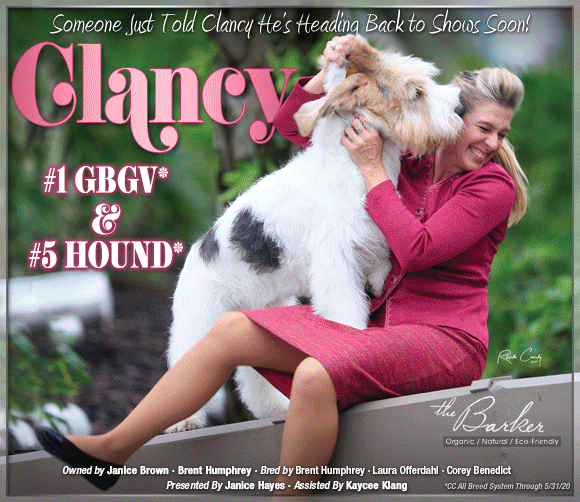
Ironically, the best example of this phenomenon wasn’t even considered a hunting dog. As in Britain, the Airedale was an unstoppable force when it hit America. The breed gained traction as both a pet and showdog, reigning supreme until the Great Depression. That celebrity factor overshadowed an equally powerful undercurrent of support coalescing around its working abilities. Hartley was far from the only breed historian to extol its all-around versatility for everything from dogsledding to trailing, pack hunting, pointing and flushing birds, treeing, water retrieving, bringing down big game, and proving to be an indispensable farm dog. He wrote, “Airedales were first imported in 1897, and as companion and guard dogs, hunters and retrievers have made wonderful strides…They are natural hunters of both large and small game and require very little training.” Praising “his grit, courage, staying quality and strength,” Hartley mentioned some formidable quarry that has met its match in the Airedale including coyote, bear, badger, and lynx. Ultimately those working Airedale bloodlines kept the breed alive for decades after its popularity crashed. Hartley adds that it wasn’t the only British Terrier to make the grade as an American working dog. He said, “Practical hunters have no interest in most of the Terrier family, save for two types.”
Hunt terriers from legendary packs like the Pytchley, Quorn, Oakley, and Belvoir provided the foundation for the Fox Terrier. Various introductions and backcrosses blended Bulldog, Beagle, Bull Terrier, Italian Greyhound, Black-And-Tan, and other stuff into the mix of early Fox Terrier show stock. And it was a winning recipe. Fox Terrier entries literally drove the development of early British shows. Reviewing the breed for his Modern Dog Encyclopedia, Davis throws out a few numbers to make that point. “A terrific breed boom started around 1869 when nearly one-tenth of the dogs shown at Islington were Fox Terriers. Every year the numbers gained, at one time reaching 270 entries at the Nottingham show.” That represented over a third of Nottingham’s total entry.
In reality, the breed didn’t exist until 1860, and although it was derived from hunt Terriers, technically, its potential as a show dog-not a worker- catalyzed its evolution.
Despite the flawed logic supporting the notion, its subsequent show ring triumphs persistently elicited vociferous complaints about its deteriorating working abilities. Perhaps its development deviated from the conventional path. Nonetheless, it ranks among the sport’s greatest success stories.
But as Clifford Hubbard admitted in his Complete Dog Breeders Manual, “taste in dogs changes very considerably from time to time… It is difficult to explain why these things happen and it is harder still to forecast which will be the popular breeds in say, ten years to come. There are many winds blowing in the doggie world, and as they never blow in the same direction for very long.”
Like the Airedale, Fox Terrier fortunes eventually crashed. Luckily, by then, the show ring wasn’t its only source of security. While attention was riveted on those stunning achievements, Americans had industriously crafted the breed into a real working terrier, which Graham conceded after seeing them in action. He wrote, “I am compelled to give fox terriers a position among true sporting dogs…they are much quicker than hounds in preventing escape of game. When rabbits are prevalent enough to be troublesome, fox terriers can start more rabbits than beagles or large hounds…if a man knows how to hunt American hare he would rather have a dog which starts game quickly than one which trails. As to squirrels, my friends tell me that the fox terrier is the best squirrel dog ever seen. We therefore have legitimate grounds to class these popular little dogs as members of the American sporting class”
Like America’s freeform interpretations of Beagle, Foxhound, and the rest, these Fox Terriers weren’t exactly ideal type. But they certainly confirmed the breed’s potential as a working terrier. They also became the basis of uniquely American variations like the Rat Terrier, Feist, Toy Fox Terrier and others.
In sharp contrast to Europe’s dwindling job market for traditional working and hunting breeds, America remained 95-percent rural well into the twentieth century. Although it received comparatively little acknowledgment, that factor dominated purebred development for most of this country’s history.
It gave many breeds a new lease on life and/or perpetuated their legacies of carefully honed skills. Primarily, it demonstrates that obsolescence is a purely subjective determination on the purebred continuum. No breed ever really goes out of style. As Graham poetically admits, it simply requires a new vision. “It is the philosopher’s best message that intolerance is only a name for ignorance; that only those who have nothing to change never change their minds.” More than anything, American dog breeding epitomized democracy in action.
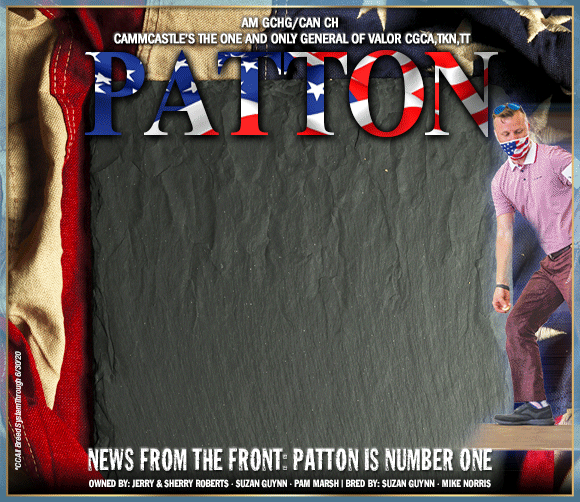
Short URL: https://caninechronicle.com/?p=189357
Comments are closed











